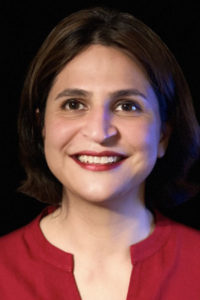
During What’s New in Diabetes Technologies for Youth?, presented live Sunday, June 5, a panel of experts discussed the latest advances in diabetes technologies and the unique challenges and barriers, both systemic and psychological, to technology uptake and sustained use in children and young adults.
“The past decade has ushered in many exciting new technologies aimed at helping children with diabetes to better manage the disease,” said Eda Cengiz, MD, MHS, Professor of Pediatrics and Director of the Pediatric Diabetes Program, University of California, San Francisco, School of Medicine, who reviewed some of the most recent technological advances in diabetes care and management.
The session can be viewed on-demand by registered meeting participants at ADA2022.org. If you haven’t registered for the 82nd Scientific Sessions, register today to access the valuable meeting content.
“By far, the most exciting development in diabetes technology has been automated insulin delivery, also known as artificial pancreas, hybrid closed-loop system, or bionic pancreas,” Dr. Cengiz said. “Currently, there are four hybrid closed-loop systems commercially available and licensed for use in children and young people, with varying minimum age for use, and there are further hybrid closed-loop systems in development and pivotal studies underway.”
While more studies are needed on the use of automated insulin delivery systems specifically in children, Dr. Cengiz said the data that is available has shown clear benefits, including reduced hyperglycemia and increased time in range.

“Studies on improvement in quality of life have shown mixed results, although many demonstrate improved or higher quality of life in those utilizing technology compared to those who are not,” she said. “Diabetes technology is reshaping diabetes, but there are challenges and there is still room for improvement, particularly when it comes to access. Regardless of their background or circumstances, everybody should have access to diabetes technology.”
Laya Ekhlaspour, MD, Assistant Professor of Pediatrics in the Division of Endocrinology, University of California, San Francisco, discussed some of the challenges of diabetes management, including the use of technology, in preschool-age children with diabetes.
“As a pediatric endocrinologist, I find this group to be the most challenging,” she said. “The characteristics of type 1 diabetes vary between younger children and older children and young adults. These younger children often present with severe diabetic ketoacidosis, for example, because the symptoms of type 1 diabetes might be hard to distinguish from other acute illnesses in this age group.”
Other factors that contribute to treatment challenges in this age group include higher variability in insulin requirements, erratic eating behaviors, and unpredictable and high levels of physical activity, Dr. Ekhlaspour said. Importantly, this patient population also is often unable to communicate the symptoms of low blood glucose.
These are all factors that could be effectively addressed and ameliorated through the use of diabetes technologies such as continuous glucose monitoring (CGM) and automated insulin delivery.

“There is, however, a lack of technologies designed specifically for young children and a limited number of studies that included preschoolers,” Dr. Ekhlaspour said. “We need longitudinal trials specifically for young children. In the meantime, we should consider the value of real-world evidence from large observational studies and focus on wider access to diabetes technologies across the diabetes population.”
Illustrating the benefits of technology use, Gregory P. Forlenza, MD, MS, Associate Professor and Pediatric Endocrinologist, University of Colorado Barbara Davis Center for Diabetes, shared data from a retrospective study conducted by Dr. Forlenza and his colleagues of 4,000 children with type 1 diabetes.
“What we looked at is kind of the classic four categories—getting insulin from a pump or a pen and testing blood sugar with a meter or with CGM,” he said. “What we can summarize from our data is that CGM use is correlated with much lower A1C values than finger sticks alone by 1.5%-2% of A1C in our center cohort.”
Additionally, he said that although insulin pump use alone was not correlated with lower A1C values, combined use of a pump and CGM was correlated with the lowest A1C values in the study.
“And even below that was use of automated systems where patients are achieving right at goal for A1C,” Dr. Forlenza said. “The bottom line is more technology helps people achieve better control. More automated systems with higher usability and less burden will continue to drive this trend; however, more research is needed to demonstrate success across high-risk populations, such as higher A1C groups and historically marginalized communities.”

Persis V. Commissariat, PhD, CDCES, Clinical Psychologist and Research Associate, Joslin Diabetes Center, and Instructor of Psychology, Harvard Medical School, discussed the psychosocial barriers to the uptake and sustained use of diabetes technology in children and young adults, including tips for providers to help their young patients live with technology.
“We know that technology offers many benefits to glycemic outcomes, self-management routines, and quality of life,” she said. “But we also have to acknowledge that with all these rapid advances in care, there are also new challenges that come up.”
In the context of living with technology, she said that barriers to care include myriad dynamics that obstruct a child or family’s ability to sustain use of their diabetes technologies or use those devices to their full capabilities.
“Barriers are unique to each child and family and important to recognize as potential sources of disease-specific burden,” Dr. Commissariat said. “There are significant multi-level barriers to sustained and effective use of diabetes technologies. As providers, we may be able to leverage greater use through greater collaboration with the person and family living with diabetes, tailored education on device options and features, and continually seeking to understand their needs.”
[sub-post-content]